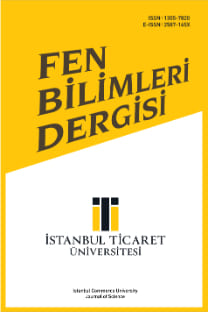KÜTLE SÖNÜMLEYİCİ ÇELİK ÇATI SİSTEMLİ BETONARME BİR BİNANIN DEPREM DAVRANIŞI
Kütle Sönümleyici Sistemleri (TMD), demiryolu trenleri gibi rüzgar ve trafikten kaynaklanan titreşimin azaltılması için yaygın olarak kullanılmaktadır. Bu makalede, mevcut betonarme binalar üzerindeki deprem etkilerini azaltmak için TMD Çelik Çatı sistemi önerilmektedir. Bu öneride, geleneksel ahşap kafes çatı sisteminin yerini, düşük yanal sertlik çelik çubuklarla betonarme binaya bağlanacak bir çelik çatı sistemi ile değiştirmektir. Çelik çatı, binanın aynı doğal frekansına sahip olacak şekilde ayarlanabilir. Tüm inşaat işleri binanın dışından uygulanır ve bina işlevini etkilemez, binanın boşaltılmasına gerek yoktur. Önerilen tekniğin etkinliğini araştırmak için betonarme yapı sonlu elemanlar modelinde zaman tanım analizi yapılmıştır. Analiz sonuçları, önerilen çatı sistemine sahip binanın, geleneksel çatılı binaya kıyasla yer değiştirme, ivme ve taban kesme kuvvetini yaklaşık yüzde 20 ila 50 oranında azalma elde ettiğini göstermektedir. Azalmanın değeri deprem karakteristiklerinden ve çatı-bina kütle oranından etkilenir. Analiz sonuçları önerilen tekniğin etkinliğini gösterir.
Anahtar Kelimeler:
Betonarme binalar, Çelik Çatı sistemi, deprem, kütle sönümleyici
EARTHQUAKE LOAD BEHAVIOR OF A RC BUILDING WITH TUNED-STEEL ROOF SYSTEM
In this paper Tuned-Steel Roof system is proposed to reduce the earthquake effects on existing RC buildings. The idea is to replace the conventional wooden truss roof system by a steel roof system which will be connected to the RC building with low lateral stiffness steel bars. The steel roof can be tuned to have the same natural frequency of the building. All the construction works are applied from outside of the building and do not affect the building function, that there is no need to evacuate the building. Time history analysis on a RC building finite element model was performed to investigate the effectiveness of proposed technique. Analysis results shows that the building with tuned roof get a reduction of top displacement , top acceleration , and base shear by about 20 to 50 percent compared with the building without tuned roof. The reduction is affected by earthquake characteristics and roof mass.
Keywords:
Earthquake, RC buildings, steel roof system, tuned-mass,
___
- Langenbach, R., (2007), Preventing Pancake Collapses: Lessons from Earthquake-Resistant Traditional Construction for Modern Buildings of Reinforced Concrete, 6th International Conferans Forensic Engineering Failure Diagnosis and Problem Solving, 9th December, Mumbai, India.
- Nawrotzki P., Jurukovski, D., Rakicevic, Z., (2005), Shaking Table Testing of a Steel Frame Structure with and without Tuned-Mass Control System, Proc. Eurodyn, Paris.
- Nawrotzki P., (2002), Artificial Increase of Elasticity and Damping for Seismically Excited Structures, Proc. 12th European Conference on Earthquake Engineering, 58, London.
- Santhi, H.M., Knight, G.M.S., Muthumani, K., (2005) “Evaluation of Seismic Performance of Gravity Load Designed Reinforced Concrete Frames,” Journal of Performance of Constructed Facilities, 19(4), 277–282.
- ISSN: 1305-7820
- Yayın Aralığı: Yılda 2 Sayı
- Başlangıç: 2002
- Yayıncı: Doç. Dr. Necip Şimşek
Sayıdaki Diğer Makaleler
OTOMOTİV SANAYİİNDE TEDARİKÇİ PERFORMANS DEĞERLENDİRMESİ İÇİN BİR MODEL ÖNERİSİ
BEYLİKDÜZÜ İLÇESİ’NİN ERİŞİLEBİLİRLİK AÇISINDAN İNCELENMESİ
Fatma Zehra ERCAN, Tuncer TOPRAK
BULANIK AHP ve BULANIK TOPSIS YÖNTEMİ İLE TEDARİKÇİ SEÇİMİ: PERAKENDE SEKTÖRÜNDE BİR UYGULAMA
Ayşenur ONAT, Sibkat KAÇTIOĞLU
TEKSTİL VE KONFEKSİYON SEKTÖRÜNDE İŞ SAĞLIĞI VE GÜVENLİĞİ: Trakya Örneği
KENT İÇİ ULAŞIMDA AKTARMA MERKEZLERİNİN ROLÜ VE YENİBOSNA AKTARMA MERKEZİ PROJESİ
Ömer Faruk KAYA, Vahit Ferhan BENLİ, Feyzullah YETGİN
KÜTLE SÖNÜMLEYİCİ ÇELİK ÇATI SİSTEMLİ BETONARME BİR BİNANIN DEPREM DAVRANIŞI
